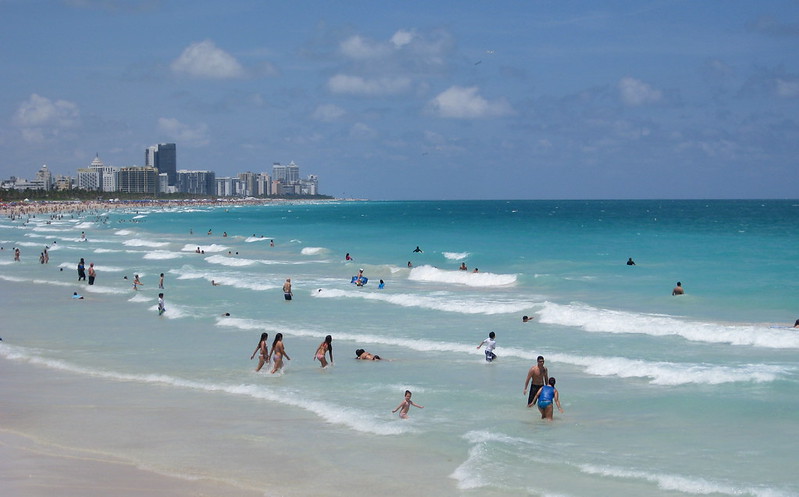Excerpt:
Aesthetics and social inequity are cause for concern as locals grapple with proposals to protect cities from climate change
There were more than a few issues with a recent federal plan to wall Miami off from the dangers of climate change.
The $5bn proposal involved building a massive concrete seawall in the fragile marine ecosystem of Biscayne Bay. It included using taxpayer money to elevate private waterfront mansions, while constructing a wall through the middle of downtown and sometimes low-income neighborhoods.
But the idea of an imposing seawall was also – in the eyes of many residents – unforgivably ugly. Miami’s Downtown Development Authority, which was reportedly alarmed by the prospect of hulking concrete slabs, brought in an architectural firm that created renderings portraying the seawall plan as an almost dystopian vision of the future, featuring grey walls defaced with graffiti reading “Berlin” circling a moat of dirty water.
That helped galvanize an opposition which became so intense that now the project is going back to the drawing board.
It might seem frivolous to focus on the aesthetics of a project that proponents hope will protect Miami from future storm surges that could flatten homes and kill thousands of people – a danger growing more dire each day due to climate change. But the residents, environmentalists, businesspeople and politicians battling to amend this recent seawall proposal see the fight in existential terms: they are trying to preserve the soul of the city.
“Miami is all about our connection to the water,” said Rachel Silverstein, executive director of the environmental research and advocacy group Miami Waterkeeper. “At what point are people not going to want to live here any more because of the solution they’re proposing, which is so destructive to our community and our identity..”









